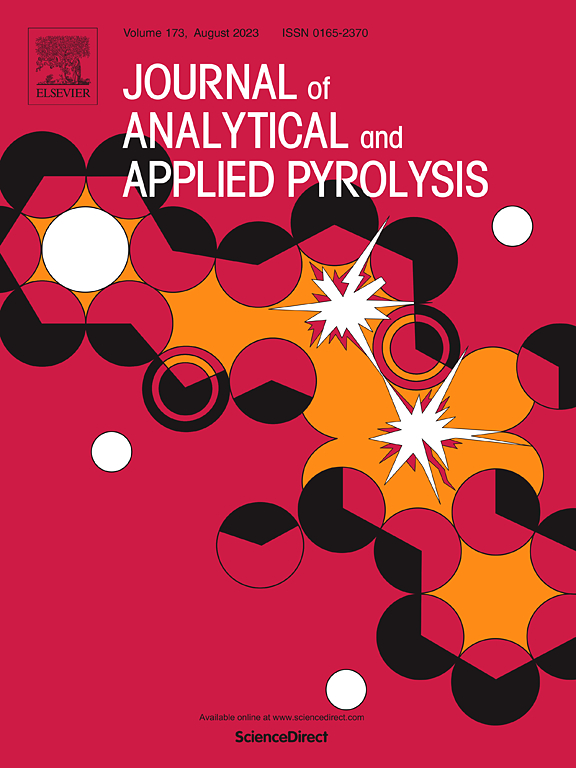Hydrochar from co-hydrothermal carbonization of sewage sludge and sunflower stover: Synergistic effects and combustion characteristics
IF 5.8
2区 化学
Q1 CHEMISTRY, ANALYTICAL
引用次数: 0
Abstract
This study carried out co-hydrothermal carbonization (Co-HTC) on sewage sludge (SS) and sunflower straw (SFS) at various ratios (1:0, 3:1, 1:1, 1:3, 0:1) to prepare hydrochar. The raw samples and produced hydrochar were characterized using ultimate analysis, proximate analysis, Brunauer-Emmett-Teller (BET), scanning electron microscopy (SEM), Fourier transform infrared spectroscopy (FTIR) and X-ray diffraction (XRD). The potential synergistic impact during the reaction process were analyzed. As the SFS ratio increased, the fuel ratio of hydrothermal carbons rose from 0.29 to 0.37, while the higher heating value (HHV) improved from 7.44 (MJ/kg) to 20.86 (MJ/kg). The co-hydrothermal synergistic effect resulted in enhanced the hydrochar yield, energy yield, carbon sequestration rate and organic retention rate. Compared to raw sample, the surface of hydrochar exhibits a rougher and more fragmented structure, with an increased number of microspheres and micropores, resulted in an increased specific surface area. Thermogravimetric analysis (TGA) demonstrated that, in comparison to HTC of sludge alone, the Co-HTC of SS with SFS enhances the ignition temperature and delays the completion of combustion. Therefore, Co-HTC with SFS is an effective method for converting SS into clean solid fuel for energy applications.
污水污泥和向日葵秸秆共同水热碳化产生的水炭:协同效应和燃烧特性
本研究以不同比例(1:0、3:1、1:1、1:3、0:1)对污水污泥(SS)和向日葵秸秆(SFS)进行共热碳化(Co-HTC),以制备水煤炭。使用终极分析、近似分析、Brunauer-Emmett-Teller (BET)、扫描电子显微镜 (SEM)、傅立叶变换红外光谱 (FTIR) 和 X 射线衍射 (XRD) 对原始样品和制得的水炭进行了表征。分析了反应过程中潜在的协同影响。随着 SFS 比率的增加,水热碳化物的燃料比率从 0.29 上升到 0.37,而高热值(HHV)则从 7.44(MJ/kg)提高到 20.86(MJ/kg)。共同水热协同效应提高了水炭产量、能源产量、固碳率和有机物保留率。与原始样品相比,水炭表面呈现出更粗糙、更破碎的结构,微球和微孔数量增加,导致比表面积增大。热重分析(TGA)表明,与单独使用污泥的 HTC 相比,SS 与 SFS 的共 HTC 提高了着火温度,推迟了燃烧的完成时间。因此,与 SFS 共热催化还原是将 SS 转化为清洁固体燃料用于能源应用的有效方法。
本文章由计算机程序翻译,如有差异,请以英文原文为准。
求助全文
约1分钟内获得全文
求助全文
来源期刊
CiteScore
9.10
自引率
11.70%
发文量
340
审稿时长
44 days
期刊介绍:
The Journal of Analytical and Applied Pyrolysis (JAAP) is devoted to the publication of papers dealing with innovative applications of pyrolysis processes, the characterization of products related to pyrolysis reactions, and investigations of reaction mechanism. To be considered by JAAP, a manuscript should present significant progress in these topics. The novelty must be satisfactorily argued in the cover letter. A manuscript with a cover letter to the editor not addressing the novelty is likely to be rejected without review.

 求助内容:
求助内容: 应助结果提醒方式:
应助结果提醒方式:


